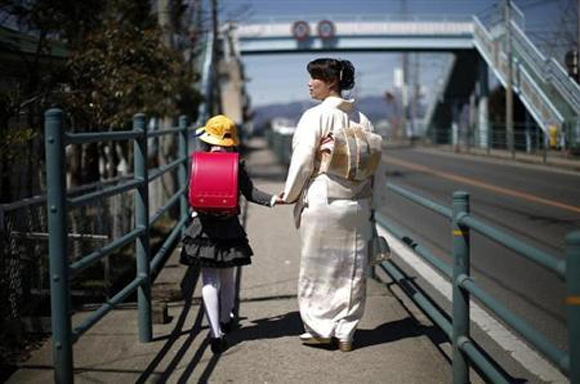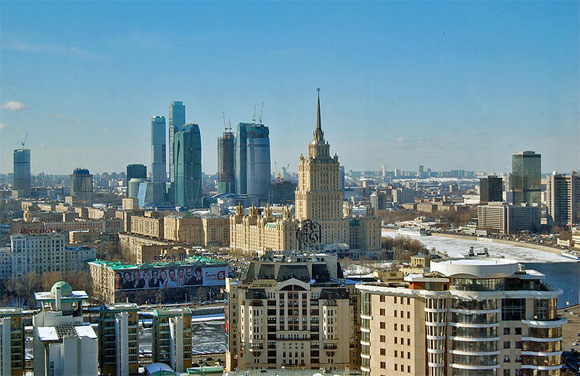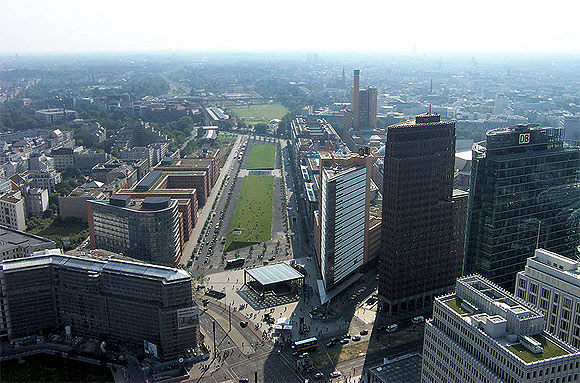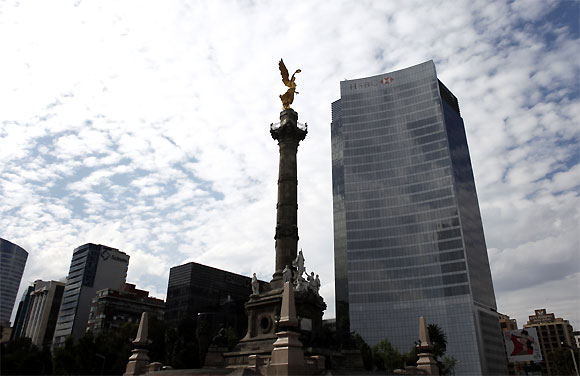 | « Back to article | Print this article |
World's 10 biggest economies, India at No 3
The United States continues to remain the world’s largest economy, according to the World Bank ranking that measures 214 economies based on their GDP (Purchasing Power Parity).
United States
Rank: 1
GDP: $15.6 trillion
A well-developed infrastructure, high productivity, technological development and abundant natural resources make United States an economic superpower.
According to the International Monetary Fund (IMF), the US GDP constitutes 22 per cent of the gross world product and is the largest importer and second largest exporter of goods.
A leader in scientific research and technological innovation, Americans have the highest average household and employee income among OECD nations.
In its market oriented economy, companies have flexibility to expand capital and develop new products.
Click NEXT to read more…
(The GDP PPP method eliminates the effects of differences and changes in relative price levels, and provides a better overall measure of the real value of output produced by an economy compared to other economies.)
Click NEXT to read more…
World's 10 biggest economies, India at No 3
China
Rank: 2
GDP: $12.4 trillion
One of the world's fastest-growing major economies, China is world's second-largest economy by both nominal total GDP and purchasing power parity (PPP).
After the economic liberalisation that began in 1978, China’s economy has grown substantially. It is today the world's largest exporter of goods.
High productivity, low labour costs and good infrastructure have backed its position as a global leader in manufacturing.
In terms of total revenues, three of the world's top ten most valuable companies are from China.
The number of US dollar billionaires in China has increased from 130 in 2009 to 251 in 2012, making China the home to world's second-highest number of billionaires.
Click NEXT to read more…
World's 10 biggest economies, India at No 3
India
Rank: 3
GDP: $4.8 trillion
India has the world's tenth-largest by nominal GDP and third-largest by purchasing power parity (PPP).
Post the economic reforms in 1991, India became one of the fastest-growing major economies.
India’s biggest asset is its 487.6-million worker labour force, the world's second-largest, as of 2011.
Services make up 55.6 per cent of GDP. The industrial sector accounts for 26.3 per cent and the agricultural sector contributes 18.1 per cent of the GDP.
Thanks to a young population and corresponding low dependency ratio, healthy savings and investment rates, and increasing integration into the global economy, the outlook for India's medium-term growth is positive according to the CIA Factbook.
Click NEXT to read more...
World's 10 biggest economies, India at No 3
Japan
Rank: 4
GDP: $4.5 trillion
Japan has the world's third-largest economy by nominal GDP and the world's fourth-largest economy by purchasing power parity.
With a highly developed industrial base, it is also the world's fourth-largest exporter and fourth-largest importer of goods.
It has some of the largest and technologically advanced producers of motor vehicles and electronics goods, besides machine tools, steel and nonferrous metals, ships, chemical substances, textile manufacturing companies.
Click NEXT to read more...
World's 10 biggest economies, India at No 3
Russia
Rank: 5
GDP: $3.4 trillion
The Russian economy has moved ahead of Germany to emerge as the 5th largest economy by GDP (purchasing power parity).
The eighth largest economy by nominal GDP, Russia is endowed with minerals and energy resources.
Higher domestic consumption and greater political stability have boosted economic growth in Russia
Russia is also ahead of other resource-rich countries in economic development, education, science and industry.
Click NEXT to read more...
World's 10 biggest economies, India at No 3
Germany
Rank: 6
GDP: $3.3 trillion
Germany has sixth-largest economy by purchasing power parity.
Besides being the second-largest exporter and third-largest importer of goods, the country has developed a very high standard of living and has a comprehensive social security system.
With a highly skilled labour force and high level of innovation, Germany has established itself as the one of the largest and most powerful economies in Europe.
Click NEXT to read more...
World's 10 biggest economies, India at No 3
Brazil
Rank: 7
GDP: $2.4 trillion
The Brazilian economy is the world's seventh largest by nominal GDP and the seventh largest by purchasing power parity.
One of the world's fastest growing major economies, Brazil has a labour force of over a 107 million engaged in agricultural, mining, manufacturing and service sectors.
A mixed economy with abundant natural resources, the nation is predicted to become one of the five largest in the world.
Brazil is known for its presence in international financial and commodities markets countries.
Click NEXT to read more...
World's 10 biggest economies, India at No 3
France
Rank: 8
GDP: $2.4 trillion
A developed country, France has the world's fifth-largest and Europe's second-largest economy by nominal GDP.
Citizens enjoy a high standard of living, high public education level, and one of the world's longest life expectancies in this wealthiest nation in Europe.
It ranks world's 4th in the Fortune Global 500 ahead of Germany and the UK.
France is also world's sixth-largest exporter and the fourth-largest importer of manufactured goods.
With 79.5 million foreign tourists visiting the country annually, France is the most-visited country in the world.
Click NEXT to read more...
World's 10 biggest economies, India at No 3
United Kingdom
Rank: 9
GDP: $2.3 trillion
World's first industrialised country, United Kingdom is a developed country and has the world's sixth-largest economy by nominal GDP.
The service sector contributes to 73 per cent of GDP.
UK’s currency, Pound sterling is the world's third-largest reserve currency after the U.S. Dollar and the Euro.
Automobiles, aerospace and pharmaceuticals form a significant part of the economy.
Click NEXT to read more...
World's 10 biggest economies, India at No 3
Mexico
Rank: 10
GDP: $2.0 trillion
Mexico has one of the world's largest economies. According to Goldman Sachs, by 2050 Mexico is expected to become the world's fifth largest economy.
Mexico was the first Latin American member of the Organisation for Economic Co-operation and Development (OECD).
Besides remittances, oil, industrial exports, manufactured goods, electronics, heavy industry, automobiles, construction, food, banking and financial services contribute to the country’s economy.









